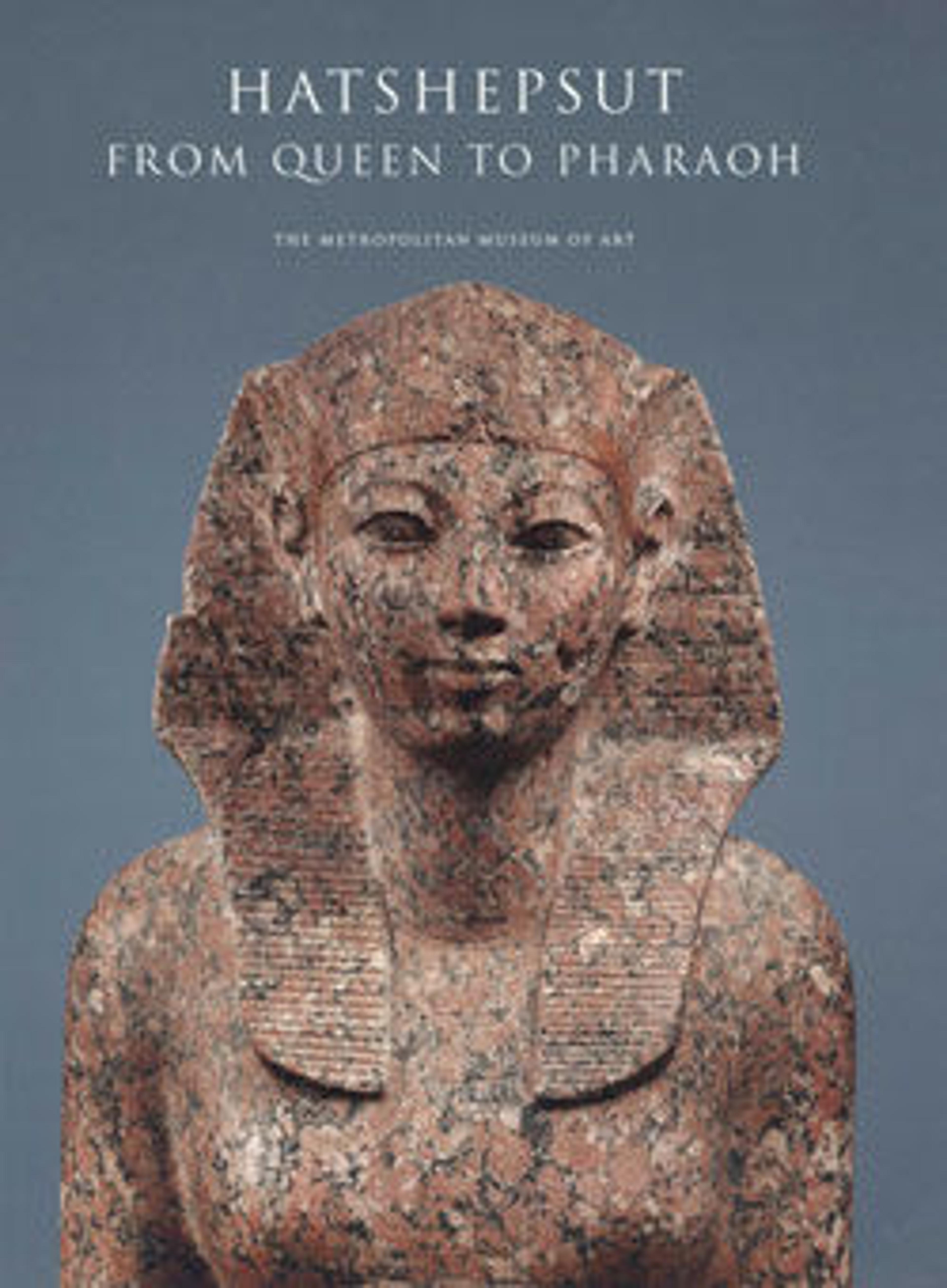Scarab with Lion-headed Goddess Protecting Maatkare
During the 1926-1927 excavation season, the Museum's Egyptian Expedition uncovered three foundation deposits along the eastern enclosure wall of Hatshepsut's funerary temple at Deir el-Bahri in Western Thebes. Among the contents were 299 scarabs and stamp-seals. Sixty-five of these are now in the Egyptian Museum, Cairo, and the rest were acquired by the Museum in the division of finds.
Among the inscriptions on the bases of these scarabs and seals are examples of every title Hatshepsut held, from the time she was "king's daughter" during the reign of her father, Thutmose I; through the time she was queen of her half-brother, Thutmose II; and during her regency and co-reign with her nephew/step-son, Thutmose III.
The inscription on the base of this scarab records Hatshepsut's throne name, Maatkare, enclosed in a cartouche. A lion-headed winged goddess, perhaps Sakhmet, protects the king with outstretched arms. Between the goddess and the cartouche is a shen hieroglyph (eternity, protection). The non-descript shape above the goddess may be intended to represent a winged sun-disk. The name Maatkare may be roughly translated as Maat (the goddess of truth) is the life force of Re (the sun god).
Among the inscriptions on the bases of these scarabs and seals are examples of every title Hatshepsut held, from the time she was "king's daughter" during the reign of her father, Thutmose I; through the time she was queen of her half-brother, Thutmose II; and during her regency and co-reign with her nephew/step-son, Thutmose III.
The inscription on the base of this scarab records Hatshepsut's throne name, Maatkare, enclosed in a cartouche. A lion-headed winged goddess, perhaps Sakhmet, protects the king with outstretched arms. Between the goddess and the cartouche is a shen hieroglyph (eternity, protection). The non-descript shape above the goddess may be intended to represent a winged sun-disk. The name Maatkare may be roughly translated as Maat (the goddess of truth) is the life force of Re (the sun god).
Artwork Details
- Title: Scarab with Lion-headed Goddess Protecting Maatkare
- Period: New Kingdom
- Dynasty: Dynasty 18
- Reign: Joint reign of Hatshepsut and Thutmose III
- Date: ca. 1479–1458 B.C.
- Geography: From Egypt, Upper Egypt, Thebes, Deir el-Bahri, Temple of Hatshepsut, Foundation Deposit 7 (G), MMA excavations, 1926–27
- Medium: Steatite (glazed)
- Dimensions: H. 1.7 cm (11/16 in); w. 1.2 cm (1/2 in); h. 0.7 cm (1/4 in)
- Credit Line: Rogers Fund, 1927
- Object Number: 27.3.232
- Curatorial Department: Egyptian Art
More Artwork
Research Resources
The Met provides unparalleled resources for research and welcomes an international community of students and scholars. The Met's Open Access API is where creators and researchers can connect to the The Met collection. Open Access data and public domain images are available for unrestricted commercial and noncommercial use without permission or fee.
To request images under copyright and other restrictions, please use this Image Request form.
Feedback
We continue to research and examine historical and cultural context for objects in The Met collection. If you have comments or questions about this object record, please complete and submit this form. The Museum looks forward to receiving your comments.
